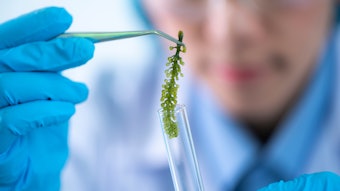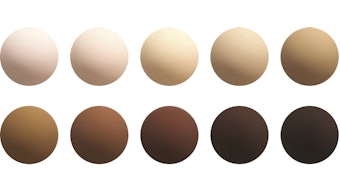Industry expert Tony O'Lenick explores the difference between degree of polymerization and degree of crosslinking. ...
Both degree of polymerization and degree of crosslinking are terms that apply to polymers but they define very different attributes. The degree of polymerization, or DP, is the number of repeat units in an average polymer chain. Consider the silicone polymer:
There are two M units (the terminal groups) and 1,000 internal groups. The DP is the total number of repeating groups, or in this case 1,000. As the degree of polymerization increases, the molecular weight increases and the viscosity of the polymer increases.
The degree of crosslinking, or DC, relates to the number of groups that interconnect two materials. The DC is generally expressed in mole percent. Consider the polymer above. The DC is zero. Now consider the following molecule:
This molecule has a high degree of crosslinking 18 (crosslinks)/40 units = DC of 0.45. The difference between a silicone fluid (DC of zero) an elastomer (a low DC) and a resin (high DC) is crosslink density.










